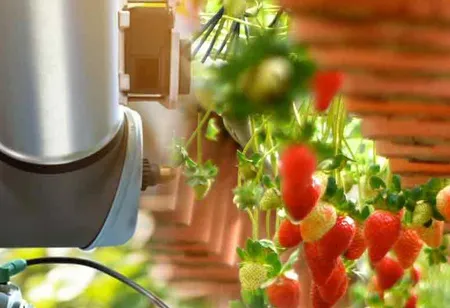Thank you for Subscribing to Agri Business Review Weekly Brief
Cultivating a Sustainable Future
Precision agriculture is becoming increasingly common in Australia.

By
Agri Business Review | Friday, September 08, 2023
Stay ahead of the industry with exclusive feature stories on the top companies, expert insights and the latest news delivered straight to your inbox. Subscribe today.
Australia's agriculture sector thrives through precision farming, utilising advanced technology to optimise resource use and minimise environmental harm, ensuring sustainability and profitability.
FREMONT, CA: Precision agriculture is becoming increasingly common in Australia. The local government is investing in research and development in precision agriculture, and several private companies are providing precision agriculture services to farmers.
A study by the Commonwealth Scientific and Industrial Research Organisation (CSIRO) found that precision agriculture could save Australian farmers USD 1.5 billion per year by 2030. The study also found that precision agriculture could reduce greenhouse gas emissions from agriculture by 10 per cent.
Here are some of the specific precision agriculture technologies that are being used in Australia
Remote Sensing: Remote sensing uses satellite imagery and aerial photography to collect data about the land, such as soil type, crop yield, and pest infestation. This data can be used to map areas of variability and make more informed decisions about managing crops.
GPS Guidance: GPS guidance systems use satellite signals to guide farm machinery, such as tractors and harvesters. This can help to reduce soil compaction and improve the efficiency of operations.
Variable Rate Application: Variable rate application systems use sensors to measure soil conditions and apply inputs, such as fertiliser and pesticides, at a variable rate according to the crop's needs. This can reduce the amount of inputs used and improve the efficiency of operations.
Soil Health Monitoring: Soil health monitoring tools can be used to assess the health of the soil, such as its organic matter content, nutrient levels, and water infiltration rate. This information can be used to improve soil management practices and to improve crop yields.
Collaborative efforts between the government and the private sector are crucial to facilitating the widespread adoption of precision agriculture in Australia.
Firstly, financial support should be allocated towards research and development initiatives in precision agriculture, fostering innovation and technology advancement. Secondly, comprehensive training programs must be developed to empower farmers with the knowledge and skills to effectively utilise precision agriculture technology, ensuring its practical application in the field. Simultaneously, regulatory frameworks must be established to safeguard data privacy and security, vital for building trust within the agricultural community. Lastly, incentivising farmers through various means, such as tax incentives or subsidies, can encourage adopting precision agriculture practices, ultimately leading to increased efficiency and sustainability within Australia's agricultural sector.
Collaborative efforts in these areas will play a pivotal role in harnessing the potential of precision agriculture for the country's agricultural future.
The Australian government has taken a proactive stance in advancing research and development within precision agriculture. This strategic investment aims to bolster the agricultural sector by harnessing innovative technologies and methodologies. In parallel, several private companies have emerged as key players, offering precision agriculture services tailored to the needs of farmers. This synergy between public and private sectors is poised to revolutionise Australian agriculture.
Precision agriculture, with its ability to enhance crop yields, minimise input costs, and promote environmental conservation, holds immense promise. As this technology evolves and becomes increasingly cost-effective, its adoption is expected to surge among farmers, heralding a transformative era of sustainable agriculture across the country.





